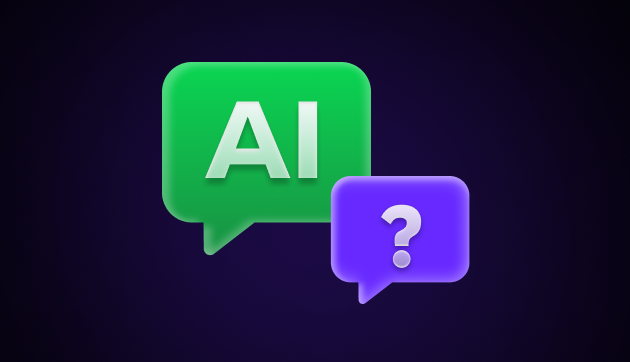
The Ultimate List of Free AI Tools You Shouldn’t Miss
Oct 22, 2024 7 Min Read 3490 Views
(Last Updated)
There are a lot of AI tools out there that can enhance your life to a great extent. But what’s bothering the most is the fact that those tools are paid ones or have limited features on the free tier.
But to solve that, we produced this article that consists of some of the best free AI tools across various domains and fields that help you out in numerous ways.
So, sit tight and read till the end about all the free AI tools that are factored solely based on their features, their usage, and compatibility. Let us get started!
Table of contents
- The Ultimate List of Free AI Tools You Shouldn’t Miss
- The Ultimate List of Free AI Tools You Shouldn’t Miss
- FlowiseAI
- Void Editor
- TTS Reader
- Be My Eyes
- Snopes Factbot
- AutoGen
- Scribble Diffusion
- PimEyes
- Krea.ai
- InVideo
- Conclusion
- FAQs
- What are free AI tools?
- Are free AI tools secure to use?
- How can AI tools help with task automation?
- Can free AI tools integrate with other software?
- How do AI tools ensure data security and privacy?
- Are free AI tools suitable for business use?
The Ultimate List of Free AI Tools You Shouldn’t Miss

Here’s an overview of the Top 10 Free AI Tools:
| S.No. | Tool Name | Features | Compatibility | Ease of Integration | Access Now |
| 1 | FlowiseAI | Low-code platform for building AI chatbots and workflows | Web, Desktop | High | Link |
| 2 | Void Editor | Open-source AI code editor with autocomplete | Web, Desktop | Easy | Link |
| 3 | TTS Reader | AI text-to-speech tool with natural-sounding voices | Web | Easy | Link |
| 4 | Be My Eyes | AI-powered app assisting the visually impaired | Mobile | Seamless | Link |
| 5 | Snopes Factbot | AI chatbot for fact-checking rumors and news | Web, Mobile | Easy | Link |
| 6 | AutoGen | Microsoft’s open-source multi-agent AI framework | Web, API | High | Link |
| 7 | Scribble Diffusion | AI-powered sketch-to-art tool for transforming drawings | Web | Easy | Link |
| 8 | PimEyes | AI facial recognition search engine | Web | Easy | Link |
| 9 | Krea.ai | AI-powered image generator based on text inputs | Web | Easy | Link |
| 10 | InVideo | AI video creation platform with script and video editing | Web, Desktop | Easy | Link |
The Ultimate List of Free AI Tools You Shouldn’t Miss
The overview of the top free AI tools is done. It is time to get real and see everything about those free AI tools in detail!
1. FlowiseAI
FlowiseAI offers an intuitive low-code platform for building AI-powered chatbots and workflow automation.
With its drag-and-drop interface, users can design custom virtual assistants and automate business tasks, making it ideal for customer service, task management, and more.
Ease of Use: FlowiseAI is known for its simplicity and is designed for non-developers, allowing users to create functional chatbots without needing to write a single line of code.
Automation: Automates workflows and tasks, reducing manual intervention in customer service and data collection processes. The platform also provides integrations with various third-party tools, making it adaptable to existing systems.
Ease of Integration: It integrates easily with other platforms through APIs, allowing users to connect their workflows with apps like Slack, Google Drive, and more.
Purpose: FlowiseAI is designed to build and deploy chatbots and automate workflows, primarily for small businesses or teams that want to reduce manual processes.
Scalability: FlowiseAI is scalable and can handle increasing loads as your chatbot needs grow, making it suitable for both small and large enterprises.
Security: Ensures data protection and follows industry-standard security protocols, safeguarding user data and preventing unauthorized access.
Pros & Cons:
Pros:
- No coding required
- Highly customizable
- Easy integration
Cons:
- Limited customization for advanced AI models
- Some features may require advanced technical understanding for optimization
User Reviews and Ratings: 4.6 / 5 (Source: aijourney.so).
Expert View: According to a review on Capterra, “FlowiseAI’s low-code interface makes chatbot development accessible to anyone, regardless of their technical background, and its workflow automation is a game-changer for small businesses.”
Try Now: FlowiseAI
2. Void Editor
Void Editor is an AI-powered code editor that offers auto-completion, fast editing, and integrated AI chat support. It’s perfect for developers who want a lightweight, AI-assisted tool for writing and debugging code.
Ease of Use: Void Editor provides an intuitive interface with powerful AI suggestions, helping developers write code faster and more efficiently.
Automation: Auto-completes code, provides intelligent suggestions, and helps with debugging through integrated AI chat support.
Ease of Integration: Seamlessly integrates with popular coding platforms and repositories like GitHub.
Purpose: The main goal of Void Editor is to improve developer productivity by reducing the manual work required in writing and debugging code.
Scalability: Void Editor scales well with projects of all sizes, from individual developers to large-scale enterprise applications.
Security: Void Editor is open-source, and users have full control over their data and privacy. It follows industry best practices to ensure secure coding environments.
Pros & Cons:
Pros:
- Open-source and free
- AI-assisted coding
- Lightweight and fast
Cons:
- Limited advanced features compared to premium editors like GitHub Copilot
User Reviews and Ratings: 4.5 / 5 (Source: Aixploria).
Expert View: According to a review on Reddit, “It’s the only product from MS I use in my personal life. I use it for everything coding-related now.”
Try Now: Void Editor
3. TTS Reader
TTS Reader is a free text-to-speech tool that converts text into natural-sounding audio in real time. It supports multiple languages and voices, making it ideal for anyone who needs to listen to written content.
Ease of Use: The tool is straightforward, requiring users to copy-paste text into the interface and instantly convert it into audio.
Automation: Automatically detects language and produces speech with a single click, offering an efficient way to turn text into audio.
Ease of Integration: Though TTS Reader doesn’t offer direct API integrations, it can easily be used alongside other tools through simple copy-pasting or file exports.
Purpose: Perfect for creating audiobooks, listening to long articles, or assisting visually impaired individuals.
Scalability: Handles both short text snippets and long documents, making it scalable for personal or professional use.
Security: TTS Reader ensures that user data is not stored or shared, adhering to industry standards for data privacy.
Pros & Cons:
Pros:
- Simple interface
- High-quality natural voices
- Multi-language support
Cons:
- Limited customization for voices compared to premium alternatives
User Reviews and Ratings: 4.3 / 5 (Source: CNET).
Expert View: As per a review on Google Play, “After wading through many TTS reader apps, this simple and very useful app does exactly what I want, smoothly.”
Try Now: TTS Reader
4. Be My Eyes
Be My Eyes is an AI-driven app designed to assist visually impaired individuals through real-time video calls with sighted volunteers or AI assistants.
The app connects users with a global community of volunteers to help with everyday tasks.
Ease of Use: The app’s interface is extremely user-friendly, allowing users to start video calls with just one tap.
Automation: Uses AI to automatically connect visually impaired users with available volunteers or AI-based assistants for real-time help.
Ease of Integration: No integrations are required, but the app works smoothly across all devices, making it highly accessible.
Purpose: Aim to make life easier for visually impaired individuals by providing real-time assistance with tasks like reading labels or navigating unfamiliar environments.
Scalability: Be My Eyes is scalable due to its large community of volunteers and AI capabilities, ensuring support for users worldwide.
Security: The app follows strict privacy guidelines, ensuring that all video calls are secure and data is protected.
Pros & Cons:
Pros:
- Free and accessible
- Large network of volunteers
- Life-changing for users
Cons:
- Requires internet access for video calls
User Reviews and Ratings: 4.8 / 5 (Source: Apple Store)
Expert View: As per the Guardian, “The app helps blind or visually impaired people connect with users for everyday tasks “
Try Now: Be My Eyes
5. Snopes Factbot
Snopes Factbot is an AI-powered chatbot specializing in fact-checking news, rumors, and conspiracy theories. It provides reliable, researched answers quickly and is available through various platforms.
Ease of Use: Simply type a query into the chatbot, and it provides a verified fact-check almost instantly.
Automation: Automatically searches through verified databases and provides reliable answers within seconds, ensuring users stay informed and avoid misinformation.
Ease of Integration: Seamless integration with popular platforms like Facebook Messenger, Twitter, and Slack.
Purpose: To help users verify information and prevent the spread of misinformation by offering quick fact-checking services.
Scalability: The tool can handle a large volume of queries, making it suitable for widespread use during breaking news events.
Security: Data is protected through secure channels, and user privacy is maintained at all times.
Pros & Cons:
Pros:
- Fast and reliable fact-checking
- Trusted sources
Cons:
- Limited to fact-checking certain topics
User Reviews and Ratings: 4.2 / 5 (Source: Aixploria).
Expert View: As reviewed by Techradar, “By keeping to Snopes’ databases for its responses, Factbot avoids hallucinations or obsolete answers. All of the answers include links to the articles used to compose them.”
Try Now: Snopes Factbot
6. AutoGen
AutoGen is an open-source framework developed by Microsoft, designed to build multi-agent systems based on large language models (LLMs).
It allows developers to create complex AI applications with improved inference performance.
Ease of Use: AutoGen is developer-friendly, with comprehensive documentation available for setting up and implementing multi-agent systems. However, some knowledge of AI models is required to fully utilize it.
Automation: Automates the creation and deployment of multi-agent AI systems, allowing developers to run complex operations with less manual intervention.
Ease of Integration: AutoGen integrates easily with Microsoft Azure and other cloud platforms, allowing seamless deployment for large-scale AI applications.
Purpose: Ideal for enterprises and developers looking to create AI agents that collaborate on tasks like data processing, customer support, and more.
Scalability: Highly scalable, making it perfect for projects that require large-scale AI models and applications.
Security: AutoGen includes secure APIs and data protection measures, ensuring that sensitive information is handled in compliance with industry standards.
Pros & Cons:
Pros:
- Open-source
- Supports large-scale AI projects
- High-performance capabilities
Cons:
- Requires advanced knowledge for setup
- Limited support for small-scale applications
Expert View: According to e2b.dev, “What is special about AutoGen is that it is execution-capable of the code output it produces.”
Try Now: AutoGen
7. Scribble Diffusion
Scribble Diffusion transforms basic sketches or doodles into high-quality, polished artwork using advanced diffusion-based AI.
Users can upload a simple drawing, and the AI refines the scribbles into more detailed and visually appealing images. It’s ideal for artists and creatives looking to quickly prototype or conceptualize ideas.
Ease of Use: Scribble Diffusion is incredibly easy to use. Simply upload or create a sketch within the tool, and it instantly refines the image, making it accessible even for users with minimal artistic skills.
Automation: Automatically enhances rough drawings, adding textures, shading, and other artistic effects based on the sketch provided.
Ease of Integration: Although Scribble Diffusion does not integrate with external platforms, users can easily download their generated images for use in other applications or design tools.
Purpose: Designed to assist artists, designers, and hobbyists by turning simple sketches into professional-looking artwork, making it perfect for early-stage concept art and ideation.
Scalability: Capable of processing multiple images without slowing down, Scribble Diffusion scales well for both casual users and professional artists needing high volumes of refined artwork.
Security: The platform ensures user-uploaded sketches are handled securely, without storing or misusing any personal data or images.
Pros & Cons:
Pros:
- Free to use with no premium lock
- Fast and intuitive
- Great for prototyping
Cons:
- Limited control over the final design
- Best suited for rough sketches only
User Reviews and Ratings: 4.4 / 5 (Source: Tenere Team)
Expert View: According to a review on Tenere Team, “The platform is user-friendly, making it accessible for individuals with varying levels of technical expertise.”
Try Now: Scribble Diffusion
8. PimEyes
PimEyes is an AI-powered facial recognition search engine that allows users to find images of a person across the internet. It’s widely used for privacy protection, online reputation management, and research.
Ease of Use: PimEyes is very easy to use—simply upload a photo, and the AI will search for matching images across multiple databases and websites.
Automation: Automates the process of identifying facial matches across the internet, saving time for individuals and organizations.
Ease of Integration: Offers API integration, allowing businesses to incorporate facial recognition capabilities into their own platforms.
Purpose: PimEyes is primarily used for reverse image searches, helping individuals protect their privacy and manage their online presence.
Scalability: It is highly scalable, and capable of handling large search volumes, making it suitable for personal and enterprise use.
Security: PimEyes ensures the secure handling of uploaded images and follows GDPR compliance for data protection.
Pros & Cons:
Pros:
- Accurate facial recognition
- Easy-to-use interface
- Great for online reputation management
Cons:
- Privacy concerns regarding facial data usage
User Reviews and Ratings: 4 / 5 (Source: Trust Pilot).
Expert View: A review on Trust Pilot states, “The service is without a doubt one of the best face recognition engines on the internet.”
Try Now: PimEyes
9. Krea.ai
Krea.ai is an AI-driven image-generation platform that transforms text inputs into high-quality visuals. It’s particularly useful for creatives, marketers, and designers looking to generate images based on specific ideas or prompts.
Ease of Use: Krea.ai’s interface is simple and intuitive. Users can easily input text descriptions and receive AI-generated images in seconds.
Automation: Automates the creative process by using AI to turn text-based ideas into fully rendered images.
Ease of Integration: Krea.ai integrates with creative platforms and tools, allowing users to export and use their generated images in various formats.
Purpose: Designed for creatives and marketers who need to generate quick, AI-assisted visuals for campaigns, social media, or personal projects.
Scalability: The platform handles a variety of use cases, from generating single images to creating extensive visual content for large campaigns.
Security: Krea.ai ensures that user data and images are stored securely, complying with industry standards for privacy and data protection.
Pros & Cons:
Pros:
- Fast image generation
- Easy to use for non-designers
- Free access to essential features
Cons:
- Limited customization for generated images
User Reviews and Ratings: 4.6 / 5 (Source: Product Hunt).
Expert View: According to Fritz AI, “Krea AI is pretty addictive and can keep you engaged for hours. It’s fun to see the AI come up with different images based on your prompts or shapes and doodles.”
Try Now: Krea.ai
10. InVideo
Core Features:
InVideo is an AI-powered video creation platform that helps users produce professional-grade videos with minimal effort. It offers a wide array of templates, video editing tools, and script-to-video functionality.
Ease of Use:
InVideo’s drag-and-drop interface is beginner-friendly, making video editing accessible even for users with no prior experience.
Automation:
Uses AI to convert scripts into videos, complete with stock footage, transitions, and voiceovers.
Ease of Integration:
Easily integrates with social media platforms like YouTube, Instagram, and Facebook, allowing direct publishing from within the platform.
Purpose:
Ideal for marketers, influencers, and businesses that need to create promotional or educational videos quickly and efficiently.
Scalability:
InVideo is scalable, allowing users to create anything from short social media clips to longer, more detailed presentations.
Security:
InVideo provides secure storage for users’ projects and follows best practices to ensure the privacy and protection of user data.
Pros & Cons:
Pros:
- Extensive template library
- AI-powered script-to-video conversion
- Beginner-friendly
Cons: - Limited customization for complex video editing
User Reviews and Ratings: 4.5 / 5 (Source: G2).
Expert View: As reviewed on getapp.com, “It is very intuitive to work on InVideo. I also find the interface very attractive. “
Try Now: InVideo
That’s it for our list of free AI tools that can increase your work efficiency. This detailed breakdown gives you the insights you need to choose the best free AI that suits your needs.
If you want to learn more about how Artificial Intelligence and Machine Learning help us in real life and how it can enhance it, consider enrolling in GUVI’s Artificial Intelligence and Machine Learning Course which teaches everything you need and will also provide an industry-grade certificate!
Conclusion
In conclusion, these Free AI Tools provide excellent features without locking important functionality behind a paywall.
Whether you’re automating workflows, checking facts, or even assisting the visually impaired, these tools offer impressive value at no cost. Explore them to simplify your tasks and enhance productivity without worrying about hidden fees.
FAQs
1. What are free AI tools?
Free AI tools are applications powered by artificial intelligence that offer all their core features without requiring payment or a subscription.
2. Are free AI tools secure to use?
Yes, many free AI tools adhere to industry-standard security protocols. However, it’s always a good practice to review their privacy policies.
3. How can AI tools help with task automation?
AI tools can automate repetitive tasks such as content creation, coding, and customer service by using machine learning algorithms to perform tasks more efficiently.
4. Can free AI tools integrate with other software?
Many free AI tools, such as FlowiseAI, offer APIs or easy integration with third-party software, making them suitable for use in business environments.
5. How do AI tools ensure data security and privacy?
AI tools ensure data security and privacy by implementing encryption protocols, secure data storage, and adhering to regulatory standards like GDPR to safeguard user information.
6. Are free AI tools suitable for business use?
Yes, tools like InVideo and FlowiseAI offer robust features that are suitable for businesses, especially for small teams or startups that need cost-effective solutions.


























Did you enjoy this article?